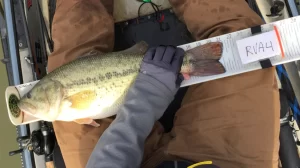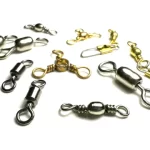Accurate fish measurements are essential for anglers who want to adhere to regulations, compete in tournaments, or simply document their accomplishments. Proper techniques ensure you measure fish correctly while respecting their well-being. This guide offers the best tips for measuring your catch, no matter the scenario.
Why Measuring Matters
- Regulatory Compliance: Many waters have strict size limits for keeping fish.
- Tournaments: Accurate measurements can determine a winner.
- Personal Records: A correctly measured fish is a true testament to an angler’s skill.

Tools for Measuring Fish
- Measuring Tape
A flexible measuring tape is compact and effective for all species. - Bump Boards
These rigid measuring boards are ideal for quick and accurate measurements, especially in tournaments. - Ruler Stickers
Adhesive rulers applied to rods, coolers, or boats are convenient for on-the-spot measurements.
How to Measure Fish Correctly
- Length Measurement
Place the fish flat on a measuring board or tape with its mouth closed. Measure from the tip of the snout to the farthest point of the tail. Ensure the fish is not curled or compressed. - Fork Length
For species with forked tails, measure to the center of the tail fork instead of the tip. This method is used for certain regulations. - Total Length
For tournament or official measurements, ensure the fish’s tail is pinched for the most extended total length.
Tips for Fish-Friendly Measuring
- Minimize Handling
Wet hands or use a wet cloth to handle the fish, reducing the removal of protective slime. - Measure Quickly
Prolonged handling can stress fish, especially if planning to release them. Have measuring tools ready before removing the fish from the water. - Support the Fish
Use both hands to support the fish when measuring large species to prevent injury.
Techniques for Recording Measurements
- Photographic Evidence: For catch-and-release fishing or records, take a clear photo of the fish on the measuring tool with both the snout and tail visible.
- Digital Tools: Some apps allow anglers to log measurements with time, location, and species data for future reference.
Common Mistakes to Avoid
- Inaccurate Tools: Ensure rulers or boards are properly marked and not worn down.
- Curling the Fish: A bent or curled fish may lead to shorter measurements.
- Misaligned Measurements: Always align the fish’s snout and tail with the tool’s markings.
Respecting Regulations and Ethics
Follow local fishing regulations regarding size limits and protected species. When releasing a fish, ensure it is revived and healthy before letting it go. These practices support conservation and maintain healthy fisheries.
Final Thoughts
Measuring fish is more than a technicality; it’s a skill that showcases an angler’s precision and care for the sport. Whether fishing recreationally or competitively, mastering the art of accurate measurement ensures every catch is documented with integrity.
Image: kayakfishingfocus





